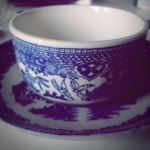The Hindenburg was a luxury airship that offered premium services to its travelers. The ship was filled with exemplary design, comfortable cabins, and world class food. To that end the bar was stocked with a huge array of alcohol and the airship offered many custom-made cocktails. Likewise the menus for the ship were fairly complicated when you consider that weight was supposed to be kept to a minimum so that the ship could easily traverse the skies. So what did people aboard the doomed Hindenburg airship eat?
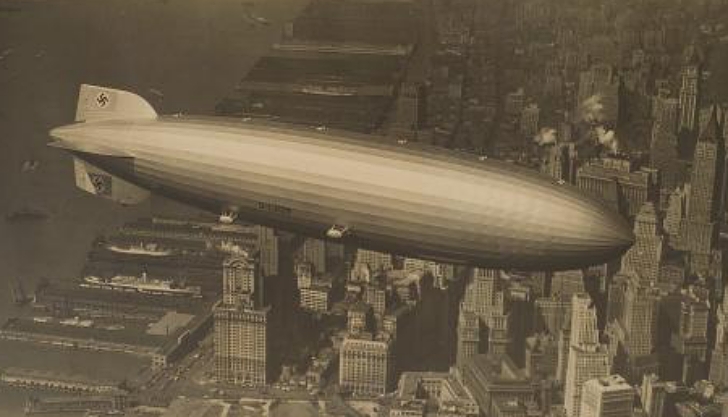
Unlike other forms of travel which had 1st, 2nd, and 3rd class tickets, the Hindenburg had only 2 different cabin sizes. And, the meal offerings appeared to be the same for each passenger regardless of which berth they were staying in.
A ticket for a berth in the bigger “A” deck for the ship’s final flight in 1937 cost 1,000 reichsmark, the equivalent of $450 US. This was during the Great Depression when many people around the world were facing hardships previously unknown for generations.

To put that price into perspective an average American worker at the time would have been making $1,500-$1,900 per year. This means that a ticket aboard the Hindenburg would have cost 25% or more of a blue collar worker’s annual wages. The second “B” deck was added later after it became clear that the helium (which is non-flammable) for which the ship had been designed had to be switched to the more readily-available hydrogen, which is flammable but can lift a heavier craft much higher.
When framed like this it’s clear that the passengers would have expected only the finest of everything and the crew of the Hindenburg aimed to deliver that whenever they could. According to historian, Douglas Robinson, “the tables were laid with white linen napkins and tablecloths, fresh-cut flowers, fine silver, and the special china service created for the Hindenburg that featured images of zeppelins bordered with blue and gold”.
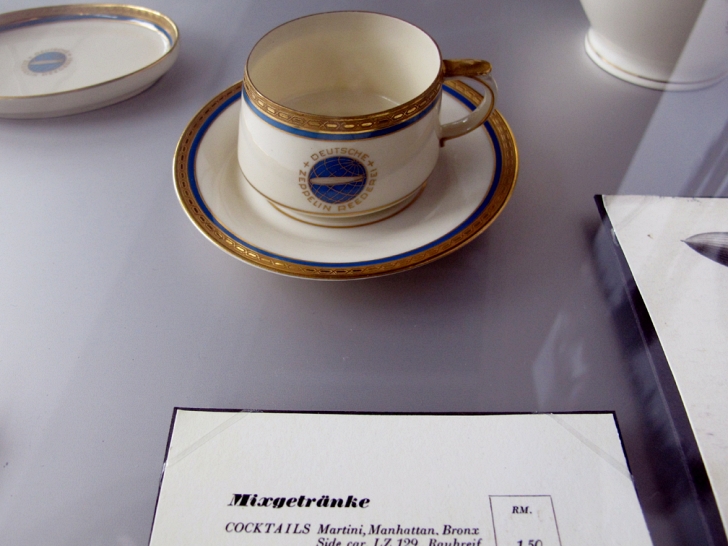
The goal of the Hindenburg was never to make money. Rather, this display of opulence was intended to show the superiority of the German people and the Third Reich to travelers from Europe and the US. To that end the bar was stocked with a huge array of alcohol and the meals contained many courses.
The weight on the ship was kept down by the usage of tubular steel framed chairs and specially-made aluminum grand piano (the latter of which was not on the craft the day it crashed). However, the aforementioned crisp, white napkins were issued one per passenger and crew expected passengers to use them over and over until the end of the flight. More napkins would have been too heavy (but pianos, gilt china, a huge stash of liquor were apparently not too heavy).
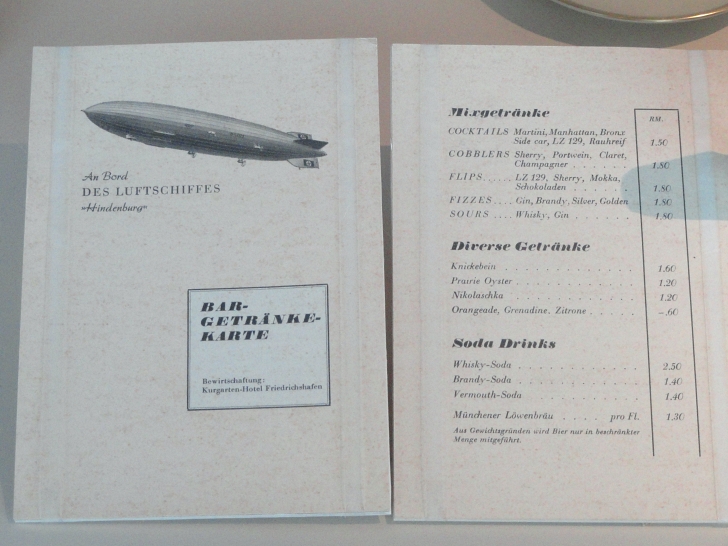
The food was included in the price of the ticket, but passengers were charged extra for drinks. A drinks menu from the airship listed many cocktails, one of which was created just for the ship (the LZ 1929). There was also orangeade available for the tea-total crowd, as well as the hangover cure of prairie oysters for those who had indulged too much the night before.
Food menus from the ship survive today, though not in huge numbers. Head chef, Xaver Maier, made sure that passengers had a huge array of items to choose from. For the final breakfast of the flight Maier served coffee, tea, cocoa, bread with butter, honey, or preserves, eggs, sausage, ham, salami, cheese, and a selection of fruit.

Lunch and dinner were filled with a variety of foods as well. A lunch menu from August of 1936 included broth Theodor, Bavarian style fattened duckling with champagne cabbage, potatoes with madeira wine gravy, and convent style pears and mocha for dessert. A dinner from the same day featured Hamilton cream soup, grilled sole, venison cutlets, Berny potatoes, mushrooms in cream sauce, and a mixed cheese plate.
A selection of wines was also offered on board the airship featuring dozens of choices.
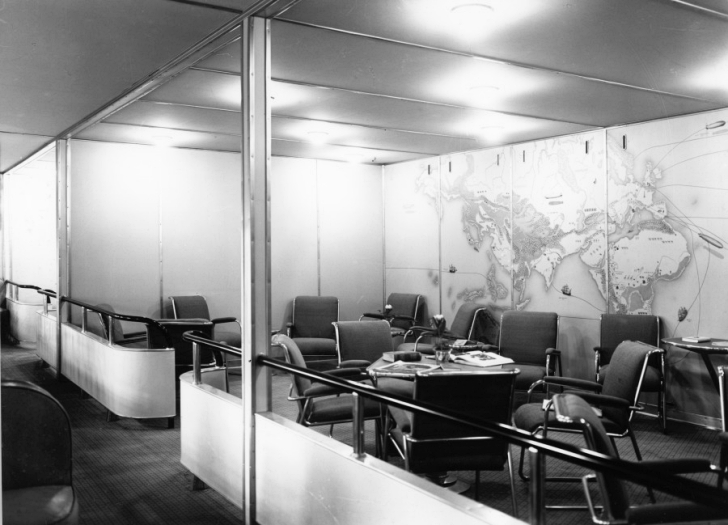
As for what final meals were served on board the ship there has been a lot of speculation. According to one source the last planned dinner of the Hindenburg consisted of a soup of Julienned vegetables, halibut with a Mousseline sauce (similar to Hollandaise) and potatoes, mixed vegetables, a cheese platter, and pumpernickel and rye breads.
However, the headwinds were against the ship towards her planned destination of Lakehurst Naval Air Station in New Jersey. The arrival time was supposed to be in the morning, but the craft was delayed by 12 hours. Chef Maier would have had to improvise the lunch that had to be served using what was left in the larders, but given the huge amounts of food on board this was probably not a huge problem. For dinner, which was held 1 hour before the crash happened, sandwiches were served.
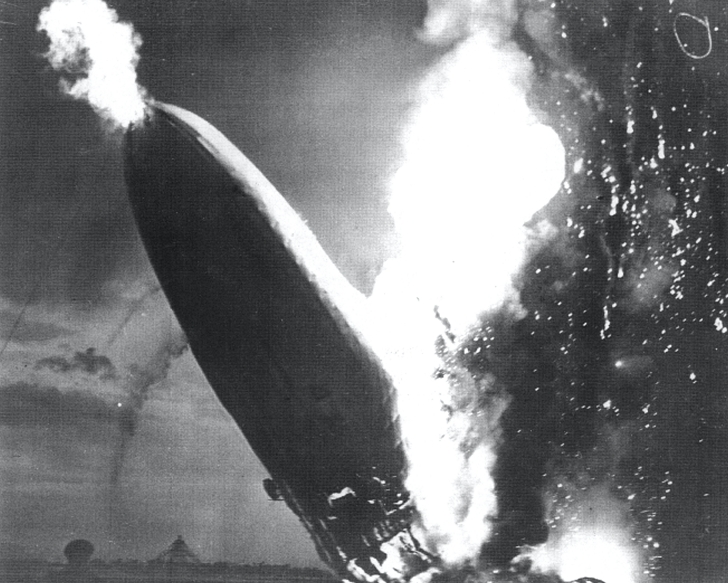
As the craft was attempting to land passengers and ground crew heard a snap or percussive explosion (accounts varied) before the ship was mostly consumed by flames in only a matter of seconds. The landing was captured in photographs and on film since the Hindenburg was a hot news item of the day and the landing was highly anticipated.
In the fiery crash of May 6, 1937, 35 passengers and crew members died, but 62 survived which is an incredible number when you consider the great speed at which the airship was burned. The high rate of survival has been attributed to the fact that the ship was already nearly on the ground when the flames broke out













